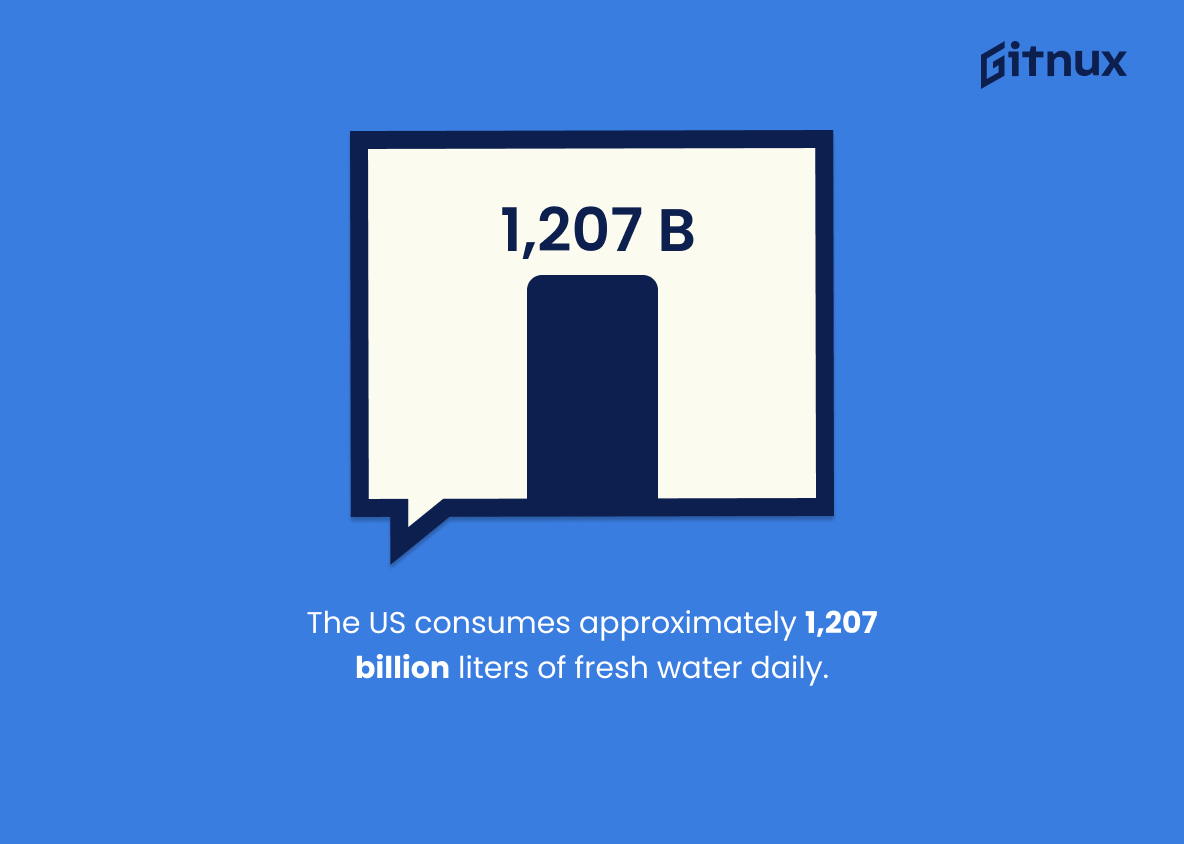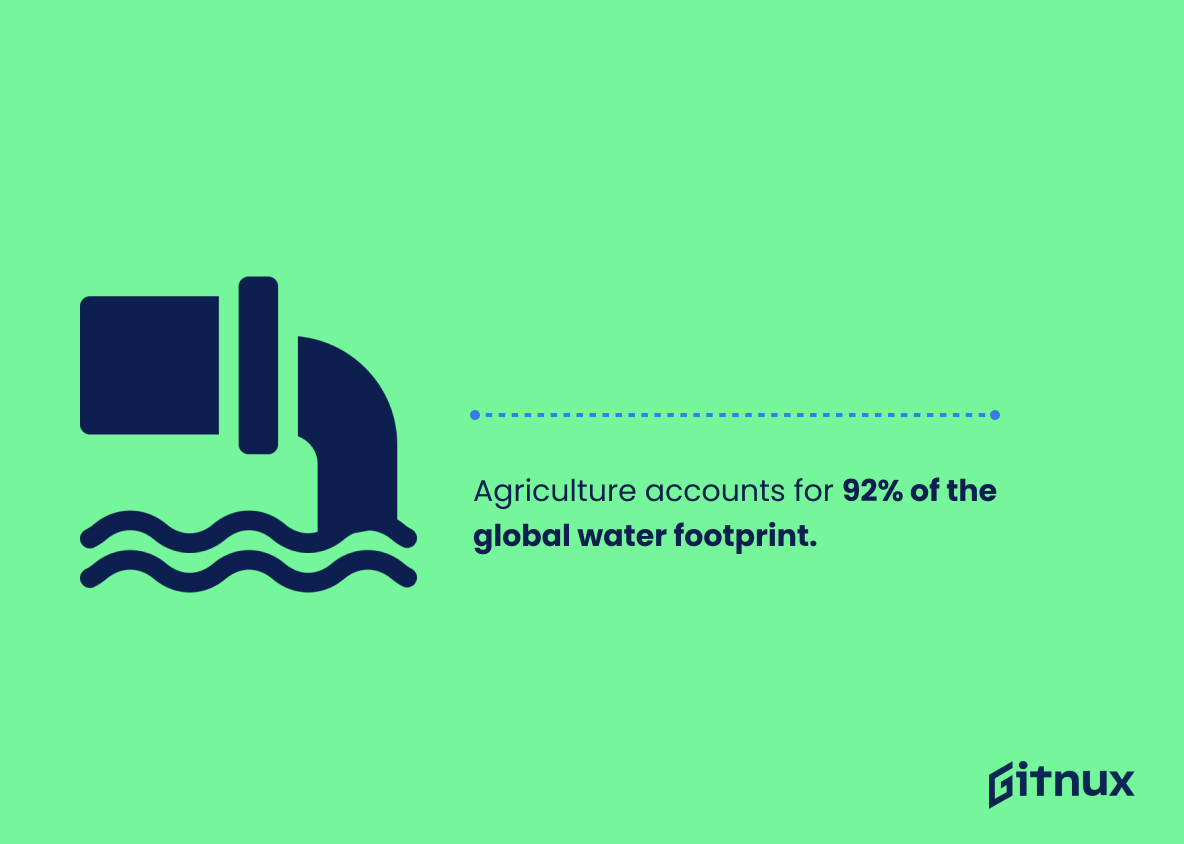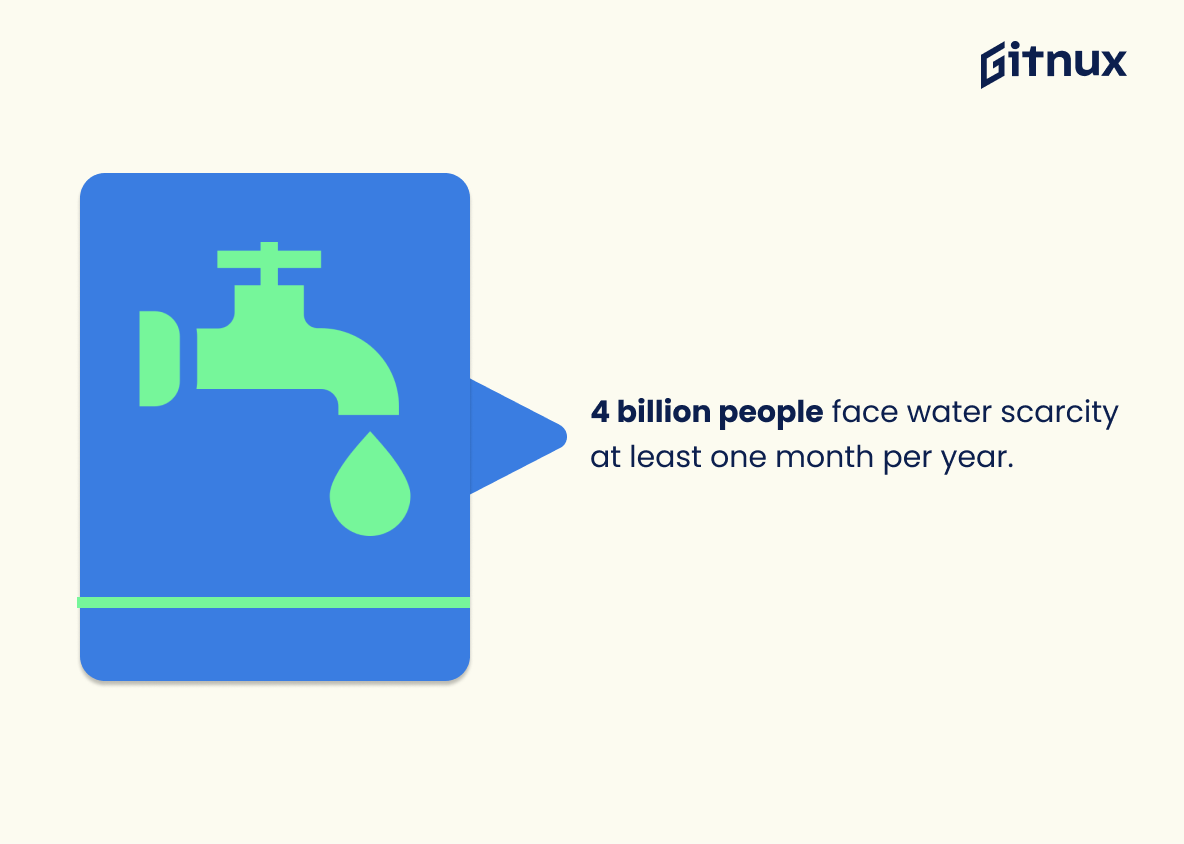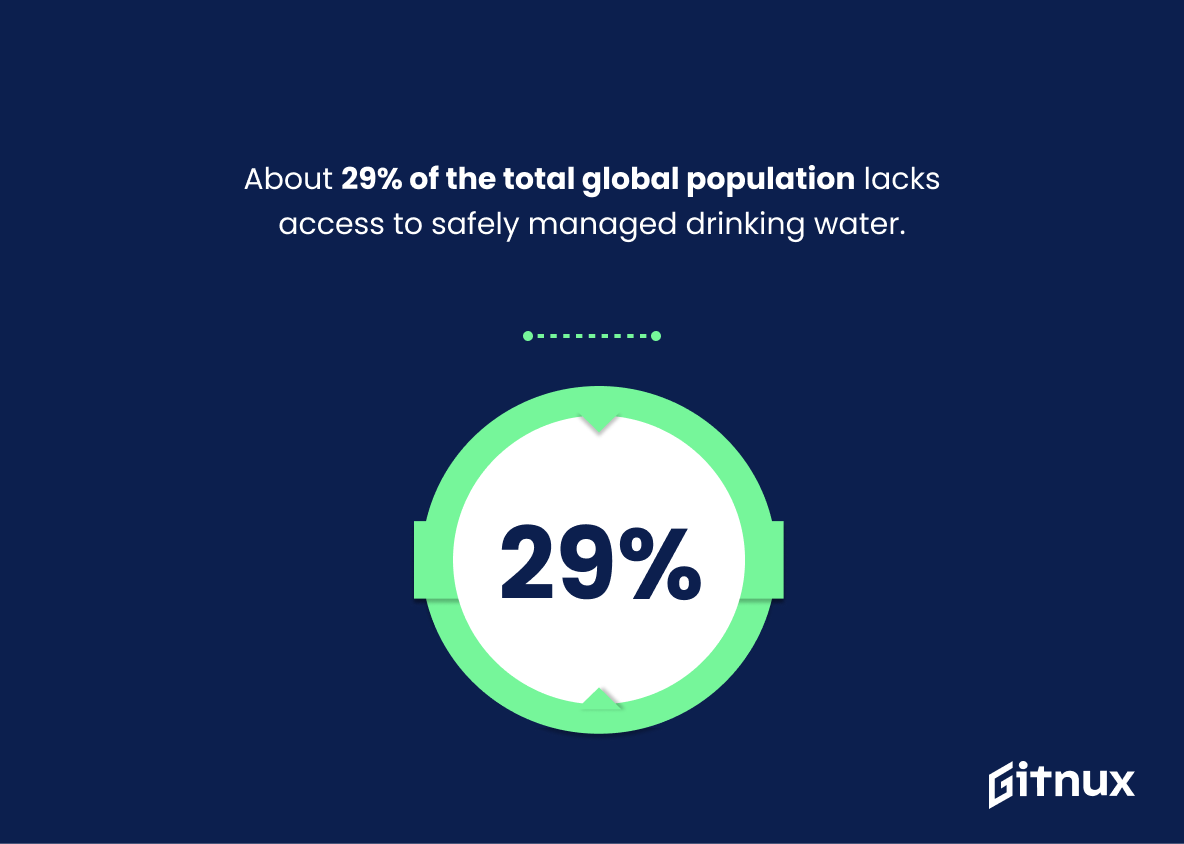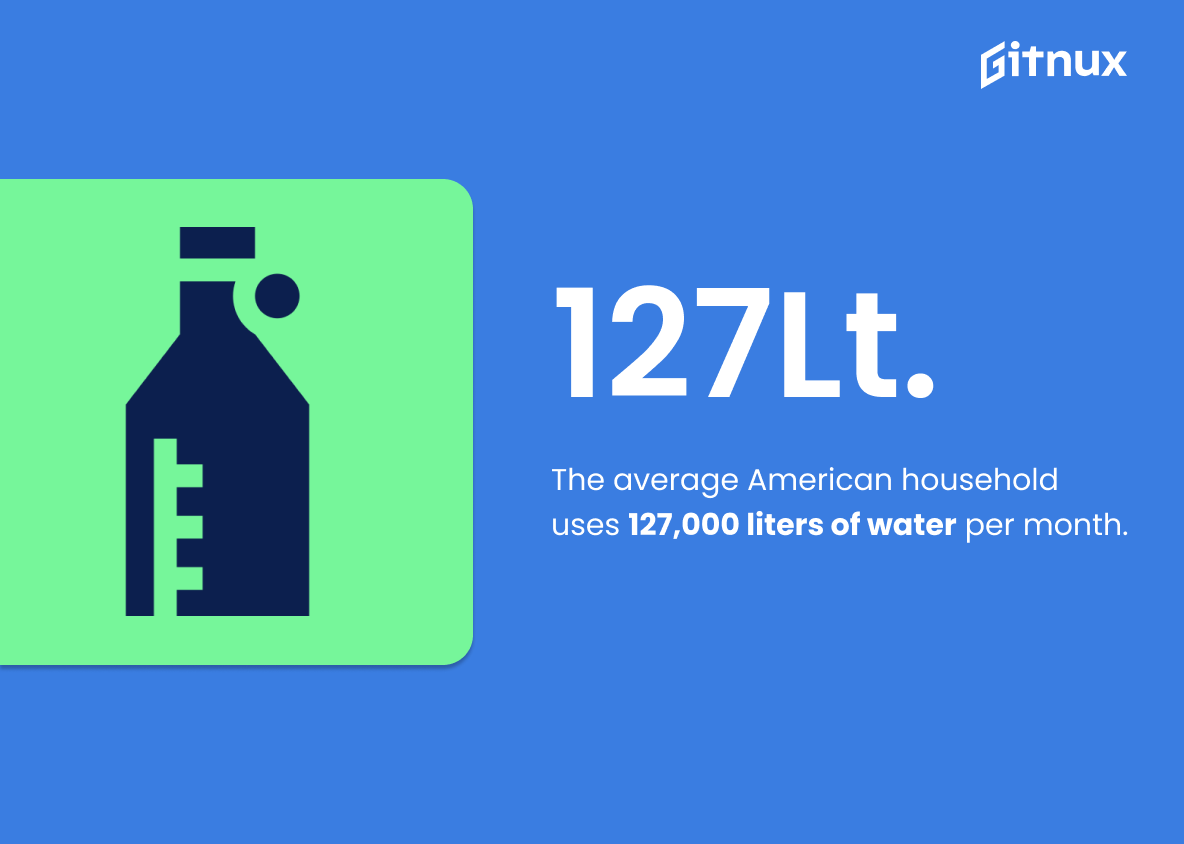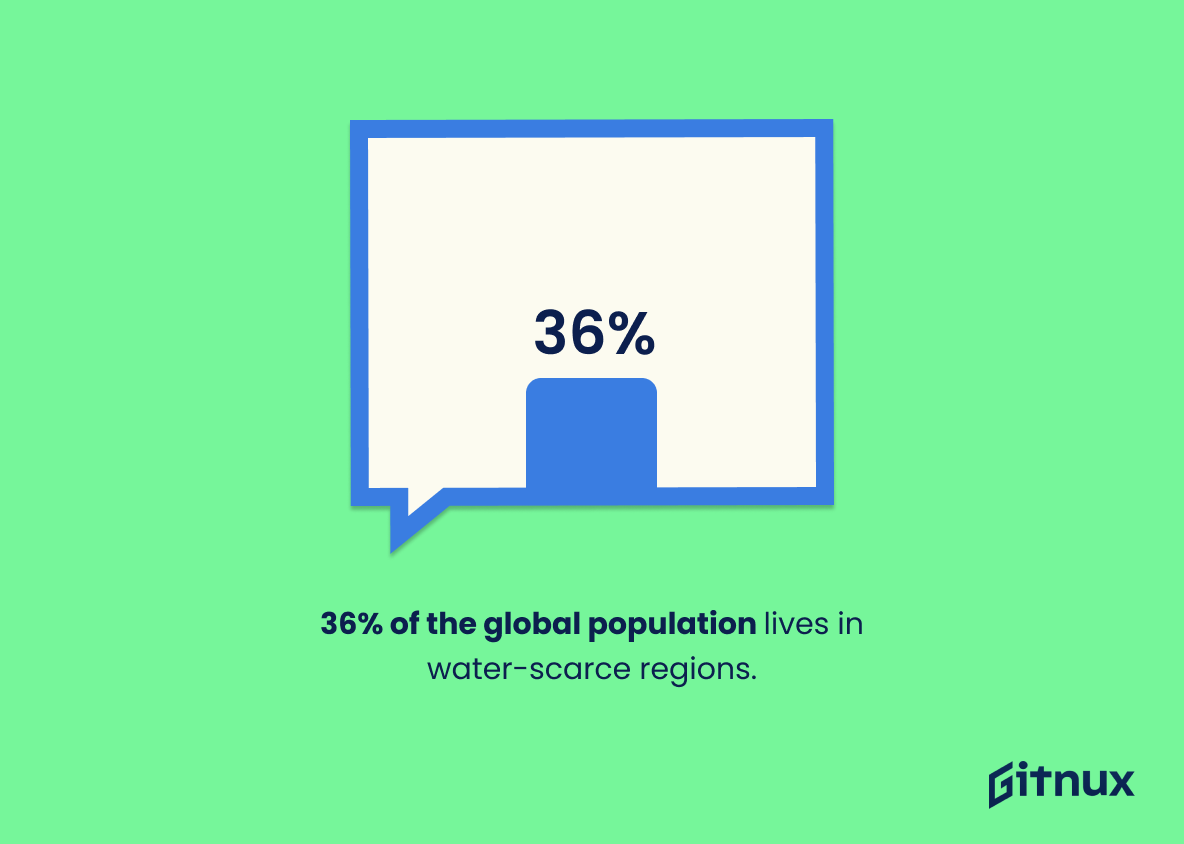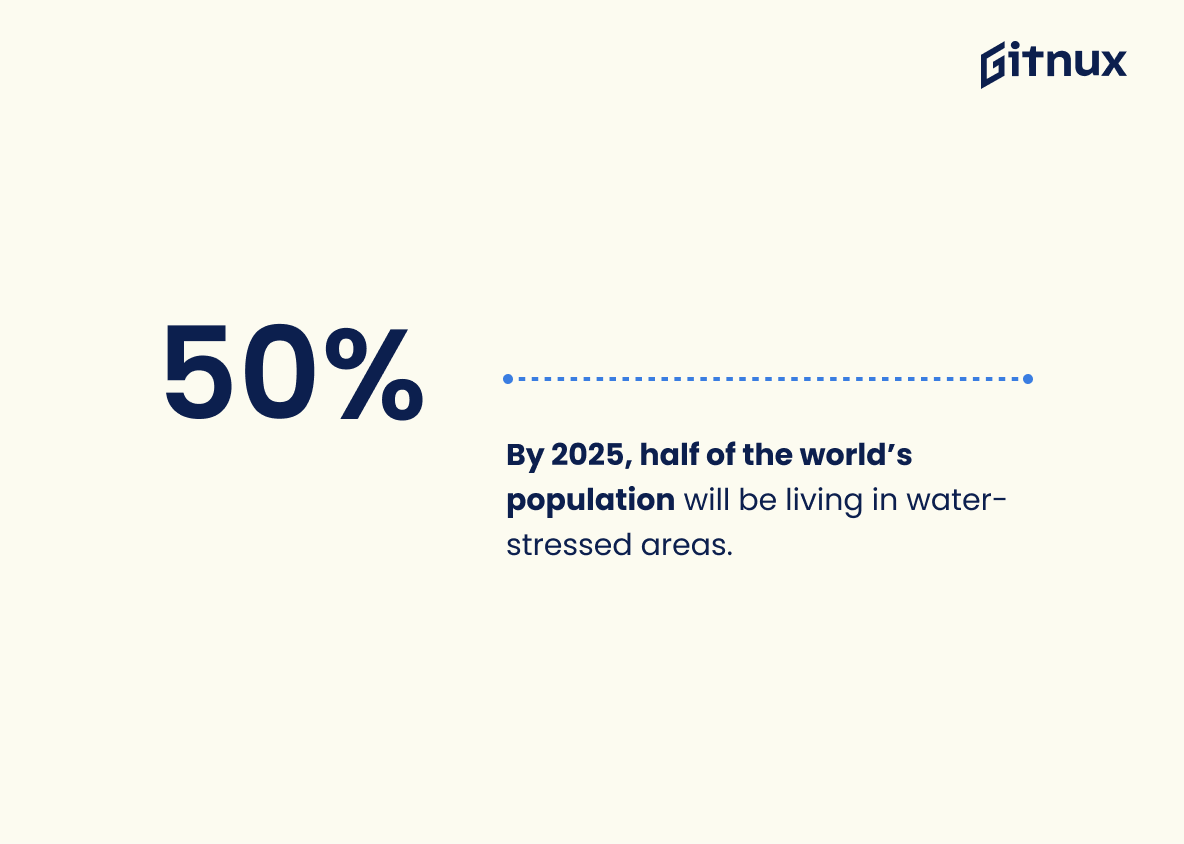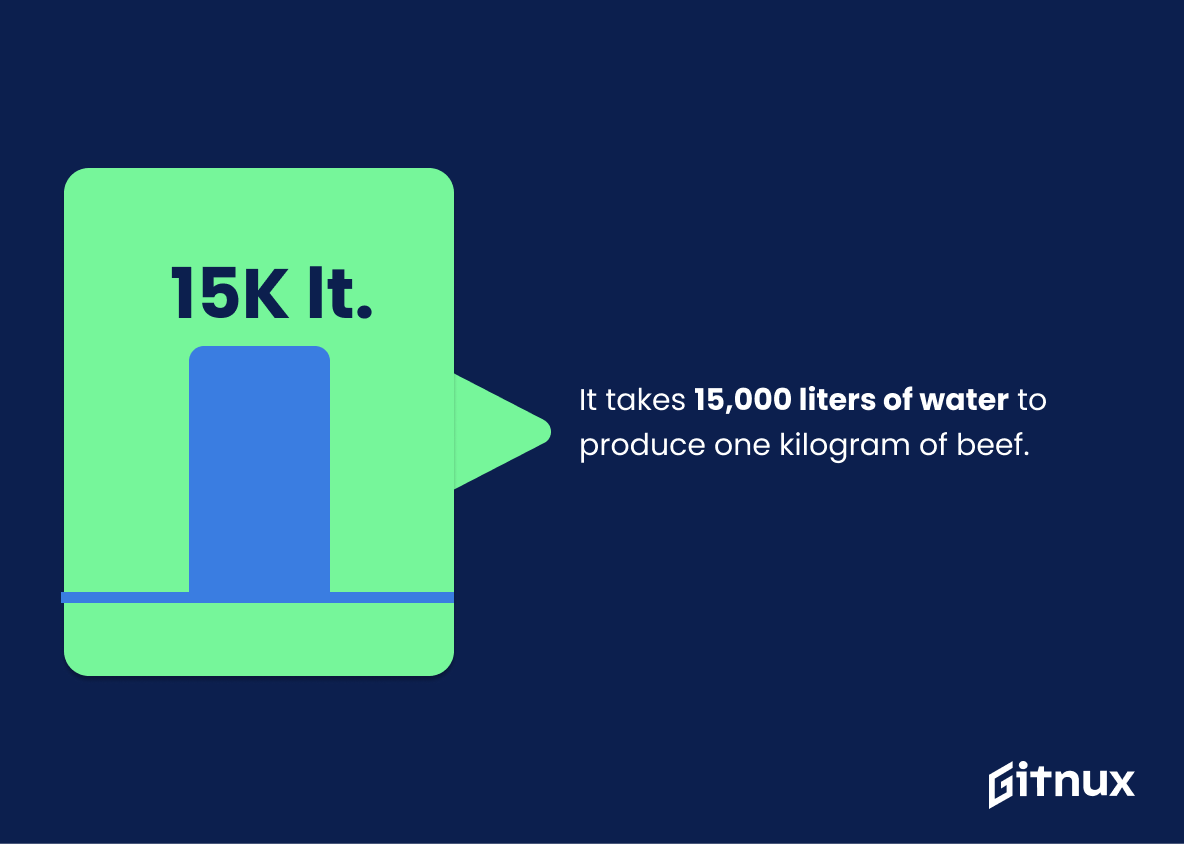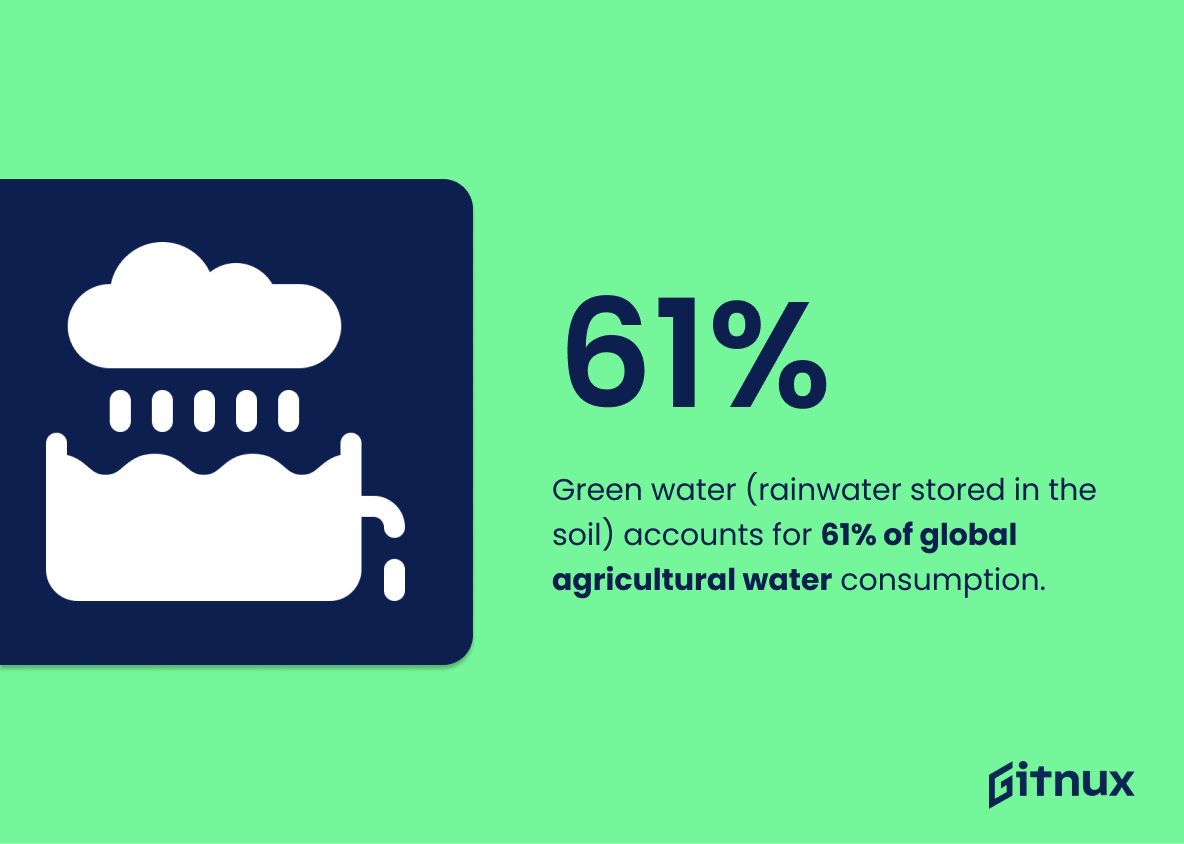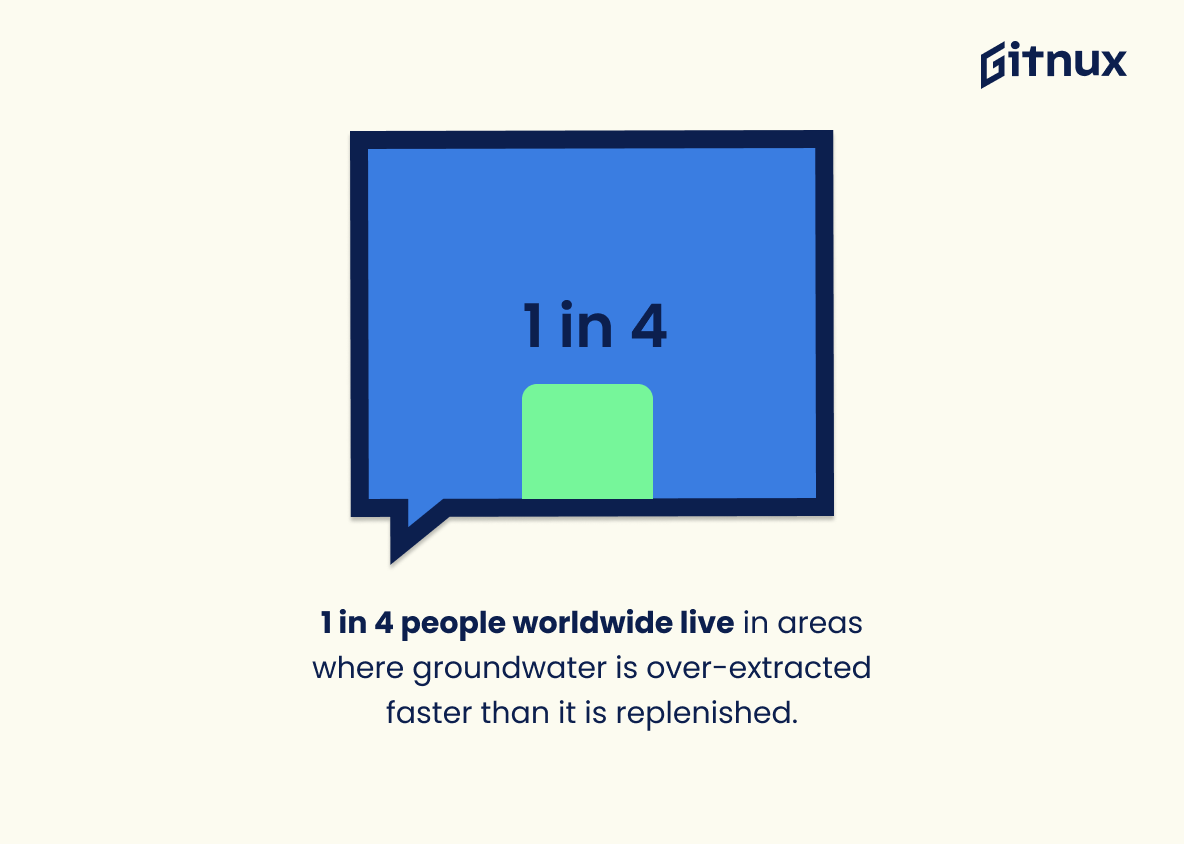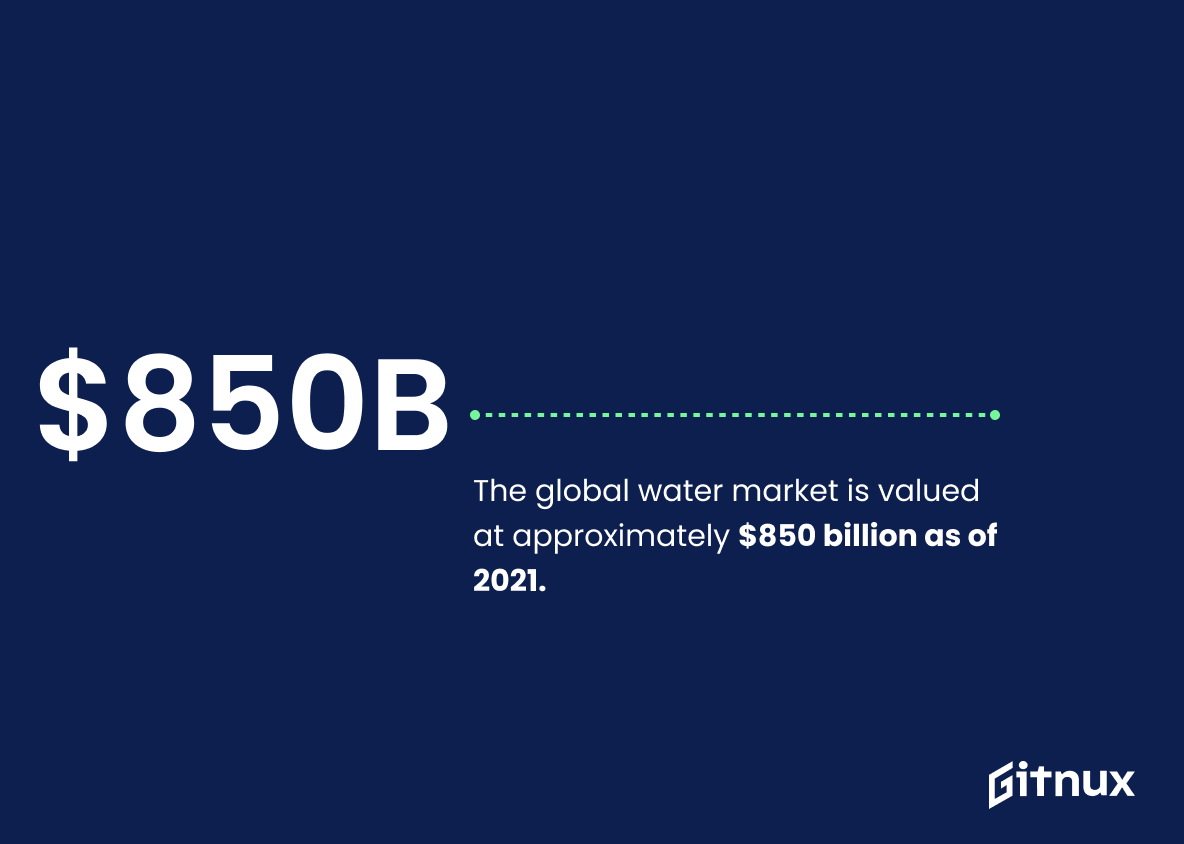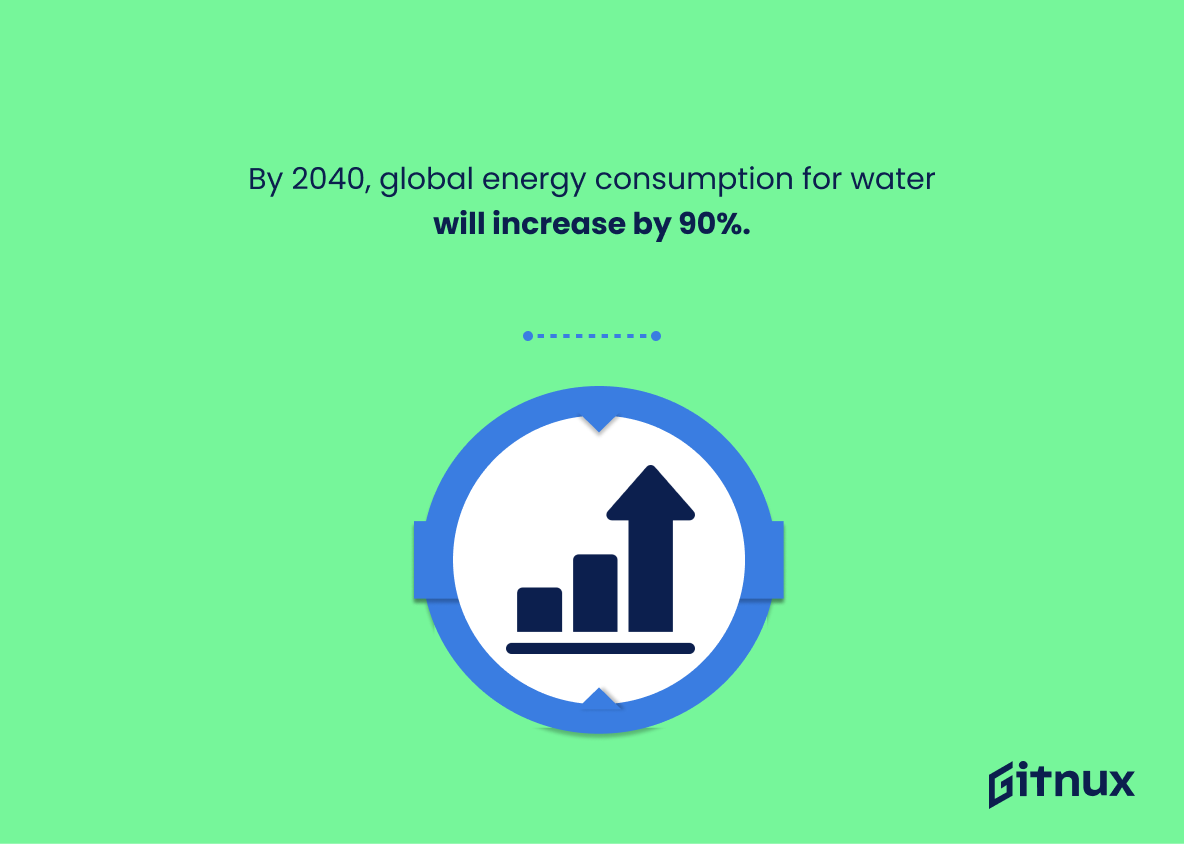Water is a precious resource that we must protect and conserve. As the global population continues to grow, so does our demand for water. In this blog post, we will explore some of the most recent statistics on global water consumption in order to gain insight into how much of this vital resource is being used around the world. We’ll look at data from sources such as The World Resources Institute, US Geological Survey (USGS), Water Footprint Network, United Nations Sustainable Development Goals (UNSDG) and more to get an understanding of where our fresh water resources are going and what can be done about it. From agriculture’s 70% share of total freshwater use worldwide to energy consumption increasing by 90% by 2040 – these facts provide us with valuable information on how best to manage our limited supply of clean drinking water now and in the future.
This statistic is a stark reminder of the immense pressure that agriculture places on the world’s fresh water supply. It highlights the need for more efficient water management practices in order to ensure that the world’s water resources are used sustainably. It also serves as a warning that if we do not take steps to reduce agricultural water consumption, we could face a future of water scarcity.
22% of the world’s fresh water is consumed by industry.
This statistic is a stark reminder of the immense amount of water that is being used by industry, highlighting the need for more efficient water management practices. It is a sobering reminder of the importance of conserving water resources, and the need for greater awareness of the global water crisis.
Global Water Consumption Statistics Overview
8% of the world’s fresh water is consumed by domestic use.
This statistic is a stark reminder of the importance of conserving water, as it highlights the fact that a significant portion of the world’s fresh water is being used for domestic purposes. It serves as a call to action for individuals to be mindful of their water consumption and to take steps to reduce their water usage. This statistic is especially pertinent in the context of a blog post about global water consumption statistics, as it emphasizes the need for individuals to be aware of their water consumption and to take steps to conserve water.
The US consumes approximately 1,207 billion liters of fresh water daily.
This statistic is a stark reminder of the sheer amount of fresh water that the US consumes daily. It serves as a powerful illustration of the immense pressure that global water consumption places on our planet’s finite resources. It is a sobering reminder that we must take steps to reduce our water consumption and ensure that our water resources are managed responsibly.
Agriculture accounts for 92% of the global water footprint.
This statistic is a stark reminder of the immense pressure that agriculture places on the world’s water resources. It highlights the need for more efficient and sustainable agricultural practices to ensure that the global water footprint is reduced and that water is used more responsibly.
4 billion people face water scarcity at least one month per year.
This statistic is a stark reminder of the immense water crisis that billions of people around the world are facing. It highlights the urgent need for us to take action to ensure that everyone has access to clean, safe water. It is a call to action to reduce global water consumption and to find sustainable solutions to the water scarcity problem.
About 29% of the total global population lacks access to safely managed drinking water.
This statistic is a stark reminder of the global water crisis, highlighting the fact that nearly a third of the world’s population is unable to access clean and safe drinking water. It serves as a call to action, emphasizing the need for greater efforts to ensure that everyone has access to this essential resource.
The average American household uses 127,000 liters of water per month.
This statistic serves as a stark reminder of the amount of water consumed by the average American household each month. It highlights the need for greater awareness of water consumption and the importance of conserving this precious resource. It also serves as a benchmark for other countries to compare their own water consumption against, and to strive to reduce their own water usage.
36% of the global population lives in water-scarce regions.
This statistic is a stark reminder of the immense pressure that water scarcity is placing on a large portion of the global population. It highlights the urgent need for action to be taken to ensure that everyone has access to clean, safe water. It also serves as a reminder of the importance of conserving water and using it responsibly, as it is a finite resource.
By 2025, half of the world’s population will be living in water-stressed areas.
This statistic is a stark reminder of the looming water crisis that is facing the world. It highlights the urgency of the situation and the need for immediate action to be taken in order to ensure that the world’s population has access to clean, safe water. It is a call to action for individuals, businesses, and governments to take steps to reduce water consumption and to find ways to conserve and protect our water resources.
It takes 15,000 liters of water to produce one kilogram of beef.
This statistic serves as a stark reminder of the immense amount of water required to produce beef, highlighting the need to be mindful of our water consumption. It is a powerful illustration of the impact of our dietary choices on global water resources, and a reminder of the importance of making sustainable decisions when it comes to our food consumption.
A 1,000 liter water meter runs out in just 10 minutes of use by an American household.
This statistic serves as a stark reminder of the immense water consumption of American households. It highlights the need for greater awareness and conservation of water resources, especially in the face of global water scarcity. It is a call to action for individuals to take responsibility for their water usage and to make more sustainable choices.
Green water (rainwater stored in the soil) accounts for 61% of global agricultural water consumption.
This statistic is a powerful reminder of the importance of green water in global agricultural water consumption. It highlights the need for sustainable water management practices to ensure that this vital resource is not depleted. It also serves as a reminder of the need to protect and conserve our natural water sources, such as rainwater, to ensure that our agricultural systems remain productive and resilient.
1 in 4 people worldwide live in areas where groundwater is over-extracted faster than it is replenished.
This statistic is a stark reminder of the severity of the global water crisis. It highlights the fact that a quarter of the world’s population is living in areas where the groundwater is being used faster than it can be replenished, leading to a shortage of water and a potential for water-related disasters. This is a major cause for concern, as it could have a devastating impact on the lives of those affected.
The global water market is valued at approximately $850 billion as of 2021.
This statistic is a stark reminder of the immense economic value of water, and the importance of conserving this precious resource. It highlights the need for governments, businesses, and individuals to take action to ensure that water is used responsibly and sustainably. It also serves as a reminder of the potential economic losses that could result from water scarcity and mismanagement.
748 million people lack access to safe drinking water, leading to 1.5 million preventable child deaths per year.
This statistic is a stark reminder of the devastating consequences of inadequate access to safe drinking water. It highlights the urgent need to address the global water crisis, as 1.5 million children are losing their lives each year due to preventable water-related illnesses. It serves as a call to action to prioritize the provision of safe drinking water to those in need, and to ensure that everyone has access to this basic human right.
By 2040, global energy consumption for water will increase by 90%.
This statistic is a stark reminder of the immense pressure that global water consumption is placing on our planet’s resources. By 2040, the demand for energy to power water systems is projected to skyrocket, highlighting the urgent need for sustainable solutions to ensure that our water supply is not depleted.
Conclusion
The statistics presented in this blog post demonstrate the global water crisis and its effects on people, industry, agriculture, and domestic use. 70% of the world’s fresh water is consumed by agriculture while 22% is used for industrial purposes. 8% of all freshwater consumption goes to domestic use with an average American household using 127,000 liters per month. 4 billion people face water scarcity at least one month out of the year due to over-extraction from groundwater sources as well as lack of access to safe drinking water for 783 million individuals worldwide. The US consumes 1,207 billion liters daily which accounts for 92% of their total global footprint while 36% live in a region facing some form or another of water stress or scarcity. By 2040 energy consumption related to global waters will increase by 90%. It is clear that action must be taken now if we are going to ensure sustainable management practices into the future so that everyone has access clean drinking water and other essential resources needed for life on Earth.
References
0. – https://www.unesdoc.unesco.org
1. – https://www.statista.com
2. – https://www.worldbank.org
3. – https://www.advances.sciencemag.org
4. – https://www.sustainabledevelopment.un.org
5. – https://www.wri.org
6. – https://www.water.usgs.gov
7. – https://www.who.int
8. – https://www.mainewater.com
9. – https://www.pubs.usgs.gov
10. – https://www.waterfootprint.org
11. – https://www.ncbi.nlm.nih.gov
12. – https://www.epa.gov
13. – https://www.usgs.gov
14. – https://www.reliefweb.int
15. – https://www.researchgate.net

